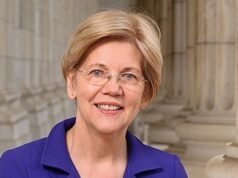Real Estate Economists Predict Moderate Growth for the Economy and Commercial Real Estate Industry Through 2019, Says New ULI Semi-Annual Market Survey
WASHINGTON (April 20, 2017) – (RealEstateRama) — The U.S. economy and commercial real estate industry are, in general, expected to experience moderate growth through much of 2019, according to a new three-year economic forecast from the Urban Land Institute (ULI) Center for Capital Markets and Real Estate.

The latest ULI Real Estate Consensus Forecast, a semi-annual outlook, is based on a survey of 53 of the industry’s top economists and analysts representing 39 of the country’s leading real estate investment, advisory, and research firms and organizations. The survey, conducted in March 2017, provides forecasts for broad economic indicators; real estate capital markets; property investment returns for four property types; vacancy and rental rates for five property types; and housing starts and prices.
The forecast, released today, projects healthy GDP (gross domestic product) growth; moderating employment growth; relative high but moderating commercial real estate volumes; continued commercial price appreciation; rent growth; positive returns (but at lower rates); relatively stable vacancy/occupancy rates for all commercial real estate sectors, and continued growth in single-family housing starts.
While encouraging, the survey results suggest restrained optimism, said ULI leader and survey participant William Maher, director of North American strategy and research at LaSalle Investment Management. “The latest survey of U.S. real estate economists showed a marked increase in expected economic measures, most likely due to President Trump’s proposals to reform the tax code, reduce regulatory burdens, and invest in infrastructure,” he said. “However, while greater job and income growth will be positive for U.S. real estate markets, forecasters were reluctant to upgrade real estate fundamentals or returns. New supply in the pipeline along with higher interest rates are likely keeping real estate economists cautious, but more likely realistic as uncertainty about future growth remains a concern.”
Among the survey’s key findings for commercial real estate:
- Following a 2015 post-recession high of $547 billion in annual commercial real estate transaction volume, sales volume is expected to continue declining from $489 billion in 2016 to $450 billion in 2017 and 2018, and slip to $430 billion in 2019. Still, the average volume of the 3-year forecast period is surpassed only by 2007, 2015, and 2016 levels, and remains well above the long-term average.
- A similar drop is anticipated for the issuance of commercial mortgage-backed securities (CMBS), a source of financing for commercial real estate. CMBS issuance grew consistently from 2009 to $101 billion in 2015, then declined in 2016 to $76 billion, a level it is expected to maintain 2017. Moderate increases, to $80 billion and $85 billion, are forecast for 2018 and 2019 respectively.
- Commercial real estate prices are projected to grow at relatively subdued and slowing rates in the next three years, at 5 percent in 2017, 3.5 percent in 2018 and 3 percent in 2019, all below the long-term (from 2001 through 2016) average growth rate of 5.7 percent.
- Institutional real estate assets are expected to provide total returns of 7 percent in 2017, moderating to 6 percent in 2018 and staying at that level in 2019. By property type, 2017 returns are expected to range from 9.8 percent for industrial to 6 percent for both office and apartments. In 2019, returns are expected to range from 7.9 percent for industrial to 5.5 percent for apartments.
- Availability and vacancy rates for 3 sectors (industrial, office, and retail) are expected to continue improving in 2017, but remain essentially flat in 2018 and 2019. The exception is the apartment sector — the vacancy rate for apartments slightly increased in 2016 from near historic lows in 2015, and is expected to rise once more in 2017 to 5.2 percent. The hotel sector’s occupancy rate is expected to remain flat in 2017 and decline slightly in 2018 and 2019.
- Commercial property rents are expected to continue rising through 2019 for all sectors, although at more subdued rates than in recent years. In 2017, rent increases in the four major property types will range from 4.6 percent for industrial to 2 percent for apartments. Rent increases in 2019 will range from 3 percent for industrial to 2 percent for retail, office, and apartments. Hotel RevPAR (revenue per available room) is expected to increase by 2.5 percent in 2017 and 2.4 percent in 2019.
- Single-family housing starts are projected to increase from 781,500 units in 2016 to 920,000 units in 2019.
Among the survey’s key findings for major economic indicators:
- Compared to the Real Estate Consensus Forecast results from October 2016, the forecasts for GDP, employment growth, and the unemployment rate are all more optimistic for both 2017 and 2018.
- The GDP growth rate is expected to rise to 2.3 percent in 2017 (up from 1.6 percent in 2016), and then rise to 2.6 percent in 2018 before slipping to 2 percent in 2019.
- An additional 2.2 million jobs are expected to be added in 2017, just slightly below the 2.24 million jobs added in 2016. Employment growth is expected to moderate to 1.9 million jobs added in 2018 and 1.55 million jobs added in 2019.
- The unemployment rate is expected to continue its seven-year decline, reaching 4.6 percent by the end of 2017 and 4.5 percent in 2018 before ticking back up to 4.6 percent by the end of 2019.
The market survey is the most recent in a series of polls conducted by ULI to gauge sentiment among economists and analysts about the direction of the real estate industry. The next Real Estate Consensus Forecast is scheduled for release in October 2017.
NOTE TO REPORTERS AND EDITORS: The Real Estate Consensus Forecast survey results were released today during a ULI webinar open to ULI members and the press. Webinar participants were Anita Kramer, senior vice president, ULI Center for Capital Markets and Real Estate; Tim Savage, senior managing economist, CBRE Econometric Advisors; K.C. Conway, senior vice president, Credit Risk Management, Sun Trust Bank; Mary Ludgin, managing director and director of global investment research, Heitman; and Melissa Reagen, head of real estate and agricultural research, MetLife. Interviews with the panelists and access to the archived webinar recording are available upon request to members of the media.
About the Urban Land Institute
The Urban Land Institute is a nonprofit education and research institute supported by its members. Its mission is to provide leadership in the responsible use of land and in creating and sustaining thriving communities worldwide. Established in 1936, the institute has more than 40,000 members worldwide representing all aspects of land use and development disciplines. For more information, please visit uli.org or follow us on Twitter, Facebook, LinkedIn, and Instagram.
contact:
Trish Riggs at 202-624-7086





